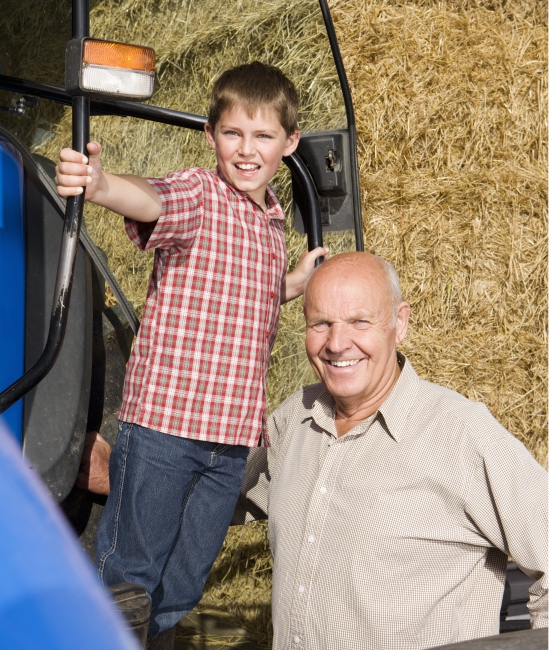

Fall is a stressful time for farmers with harvest in full swing. Add an off-farm job, a lingering pandemic and a severe drought, and the chance a farm-related injury or death could occur rises substantially.
“When I talk with kids, I always ask how many visit the farm. And you realize many of the kids who visit farms think it’s just a big playground; that they can do whatever they want because they have all this area where they aren’t confined,” says Mary Malard, a Burleigh County Farm Bureau board member. She speaks to kids about the dangers of farm equipment to classrooms in the county.
Malard says she gets some kids who say, “Oh, my grandpa says nothing can happen.”
Then she tells them, “Well you know, there’s always a first time. And I try to provide examples of what can happen.” Like when the one seat, one rider rule isn’t followed.
“When I was in school, I had a classmate who was helping haul bales, and he was riding on the back of the tractor,” Malard remembers. “He fell off, was run over and killed by the hay wagon.”
It’s also not safe to ride on someone’s lap. Malard says the one seat, one rider rule is the only way to maximize children’s safety.
“Some of the newer tractors do have two seats in the cab. And there are farmers that do have to take their kids with them because there is no daycare on a farm. I also know farmers who have upgraded their tractors. They’ve added another seat just so they can take their kids.”
And just like we have seat belts in our cars, there are seatbelts in tractors and combines as well. Anyone who rides should be belted in.
“If they hit a bump in the field or a rock, or roll over, they’re going to be the first one injured because they aren’t in a seat with a seat belt. The door could open, and they could fall out and be run over by the tractor tires.”
Power take-offs are dangerous, especially if they don’t have the proper shield in place.
“A PTO revolves about 16 times a second. It spins so fast we can’t really see it spin, so if you get too close you could get tangled in that, and it can take off arms, legs.”
Malard says farmers should also turn their tractors off when they are going to attach a power take-off.
“If you’re going to leave a child in the tractor and you’re going to attach your baler or grain auger, the child in the cab could hit the lever accidentally and start it while you’re trying to attach it.”
She says it does take a few extra minutes to turn everything off and then on again, but in the long run, it’s worth it.
“It’s worth saving your arm or leg, or not being killed.”
Grain augers are a common danger, and even more so if the shields aren’t in place.
“Farmers who have taken the safety shields off their grain augers, they need to put those back on. It’s there for a reason: so we don’t get hands and feet caught.”
Malard says grain entrapment is an eye-opener for the children she speaks to.
“I tell the kids that grain is like quicksand, so if they see a big pile of grain or the grain bin is there, and they think they can play in it, they shouldn’t. It only takes 6-8 seconds for a child to be trapped in flowing grain. And if there isn’t someone there to see them right away, they can get trapped and suffocate.
To demonstrate, Malard has a table-top grain wagon with a little toy character to scale that she puts in the wagon and then opens the bottom hatch to get the grain flowing. She has the children count how long it takes for the toy’s head to be completely submerged.
“That’s when it really sticks in their heads,” she says.
Malard says it is gratifying when she sees “the lights go on” and children understand just how quickly something bad could happen if they don’t practice farm safety.
“When you give them examples of what you are talking about, I get kids saying, ‘Oh no. I have to tell grandpa we can’t do this.”
She also has a few tips for parents who have children who often help on the farm.
“Don’t expect your kids to do what you as an adult can do. They don’t have the maturity. Stop and think before you take kids on a piece of equipment. Don’t put your kids in a spot where something can happen.”
Above all, Malard stresses kids need to ask an adult where they can be. “And if they want to go where grandpa is grinding feed or whatever, they need to take an adult with them, so they don’t get into any trouble.”